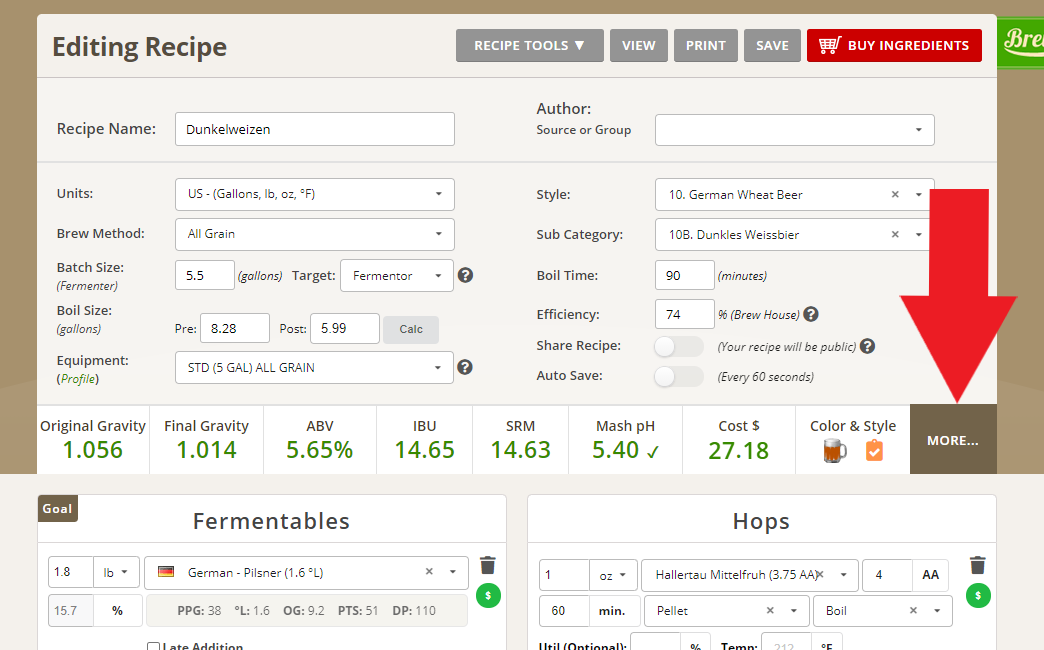https://www.brewersfriend.com/homebrew/recipe/calculator will help you predict the final IBU, ABV, etc for a given mash bill. But in general, a one gallon batch will call for approximately 2lb grain or the equivelant in extract, for something between 5% and 6% ABV I reckon. To make something closer to a big brand brewski, maybe a pound and a half. One pound would be pretty weak sister stuff, hardly fit to drink. For a heartier brew, go up to 3lb. This, for a standard 2 row pale malt. There won't be all that much difference in the alcohol level, from one ordinary 2 row to the next. Not enough to really matter, anyway. Try different types in the calculator and you will see. You can substitute unmalted grains for a portion of the malt. Try about 25% to start with. Oats is popular, as is wheat or rye or corn.
The type and color of the grains will affect the flavor and color of the beer a lot. Should be obvious. But good beer is good beer, if it is high yellow or nearly black. Hops will make a difference. For a gallon, a quarter ounce of most hops, boiled in the wort for 30 to 60 minutes, will be plenty unless you are going for an IPA style. The IBU in the calculator is a bitterness index. After your first batch using the calculator, the IBU will be a good point of reference for future hopping. You will soon figure out if 10 to 20 IBU is a good range for you, or if you prefer more like 50 or 60 IBU. Or more. If you aren't that particular, just get a pound of a popular hops, cheap, split it into 1/4oz baggies, store in freezer, and use one bag in every one gallon batch.
Honestly, I find a 5gal batch a lot easier than 5 one gallon batches. However, I keg, and almost never bottle. So YMMV.
This, for just sort of a starting point into nonspecific brewing. When you see a sweet deal of some reasonable quality fermentables, get it. Then figure out how much you want to grind for your batch. Almost the same with hops. Yeast can be somewhat critical, and if you don't have a cold place to ferment, you will want a fairly temperature tolerant yeast, especially in the summer. Any of the kviek style yeasts work great at room temperature or even up into the 90f area. The ordinary classic ale yeasts are good into the low 70's.












































![Craft A Brew - Safale S-04 Dry Yeast - Fermentis - English Ale Dry Yeast - For English and American Ales and Hard Apple Ciders - Ingredients for Home Brewing - Beer Making Supplies - [1 Pack]](https://m.media-amazon.com/images/I/41fVGNh6JfL._SL500_.jpg)
















